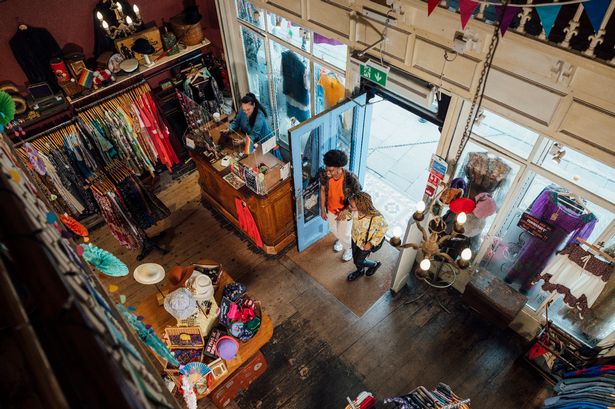A surprising discovery at a local charity shop has caught the attention of fashion enthusiasts and bargain hunters alike. A woman, who wishes to remain anonymous, was browsing through a charity store when she stumbled upon a Gucci handbag displayed in a glass cabinet alongside various pieces of jewelry. What left her astonished was not just the presence of the luxury item, but its remarkably low price tag.
The Gucci bag, a symbol of high fashion and luxury, was being sold for a fraction of its retail price. This unexpected find has sparked discussions about the value of second-hand goods and the occasional treasures that can be unearthed in charity shops.
The Appeal of Luxury in Unexpected Places
Gucci, a brand synonymous with opulence and style, typically commands high prices in retail settings. The allure of owning such a prestigious item often places it out of reach for many consumers. However, the presence of a Gucci bag in a charity shop challenges the conventional narrative of luxury exclusivity.
This development follows a growing trend where luxury items occasionally find their way into second-hand markets. According to industry experts, this can occur for several reasons, including donations from affluent individuals or estate clearances.
Second-Hand Market Dynamics
The second-hand market has seen significant growth in recent years, driven by increased consumer interest in sustainability and affordability. The fashion industry, notorious for its environmental impact, has been under scrutiny, prompting more consumers to seek out pre-owned items.
According to a report by ThredUp, the second-hand apparel market is projected to double in the next five years, reaching $77 billion. This shift is not only economically beneficial for consumers but also contributes to reducing waste and promoting sustainable fashion practices.
“The second-hand market offers consumers a way to access luxury goods at a more affordable price while also supporting sustainable practices,” said fashion analyst Emily Carter.
Historical Parallels and Expert Insights
Historically, charity shops have been treasure troves for vintage and unique items. The discovery of high-end goods in such settings is reminiscent of the past when thrift shopping was a common practice for finding hidden gems.
Fashion historian Dr. Laura Thompson notes that the appeal of charity shops lies in the unpredictability of their offerings. “There’s a certain thrill in discovering a valuable item amidst the ordinary. It’s like finding a needle in a haystack,” she explained.
Meanwhile, the fashion industry continues to grapple with the balance between exclusivity and accessibility. The presence of luxury items in second-hand markets challenges traditional notions of brand value and consumer access.
Implications and Future Outlook
The discovery of a Gucci bag in a charity shop not only highlights the potential for finding luxury items at affordable prices but also underscores the evolving dynamics of the fashion industry. As consumers increasingly prioritize sustainability and cost-effectiveness, the second-hand market is likely to continue its upward trajectory.
For those intrigued by the possibility of uncovering similar treasures, experts advise frequent visits to charity shops and keeping an eye out for distinctive items. The move represents a shift in consumer behavior, where the value is placed not only on brand names but also on the stories and sustainability behind each purchase.
As the second-hand market continues to grow, it will be interesting to see how luxury brands respond to this trend and what it means for the future of fashion retail.
